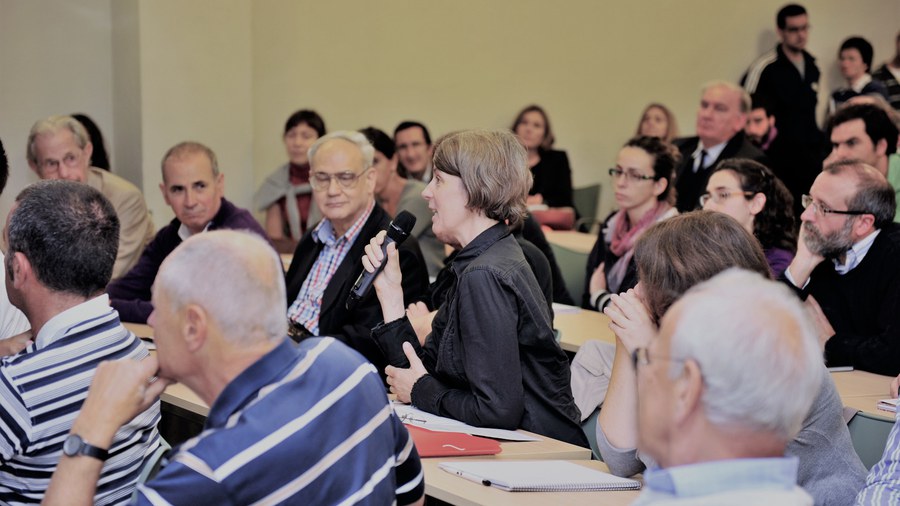Colloquia

Contact
The DIPC Colloquia are currently organized and coordinated by Geza Giedke and Thomas Frederiksen. You can contact them at
Within DIPC International Physics Colloquia initiative, outstanding guest speakers covering all areas of natural science are invited every month or so to deliver colloquium-style talks.
Scope & aim
The intended audience of DIPC colloquia are all interested scientists at DIPC and neighboring institutes, from PhD student to Professors.
Colloquium speakers are encouraged to give broadly accessible talks with emphasis on providing an overview and general ideas of their research field as well as a personal view of the open questions, grand challenges, and future research directions.
DIPC colloquia are primarily addressed to scientists and may thus contain specialized and technical material, but they are open to anyone interested in science.
Coordinates & format
Colloquia are held in the "Josebe Olarra" DIPC's Seminar Room (building 1, DIPC headquarters) and generally scheduled on Thursday afternoons. The duration of the talk is about one hour. DIPC offers refreshments afterwards to make occasion to meet the speaker and other colleagues and discuss the presentation.
Upcoming Colloquia
Battling the underdetermination of dark energy
Pedro G. Ferreira | Astrophysics, University of Oxford, UK
16:00 | DIPC Josebe-Olarra Lecture Hall
Self-Assembly of the Tau Protein: Liquid-Liquid Phase Separation and Fibrillization
Joan-Emma Shea | Department of Chemistry and Biochemistry & Department of Physics, University of California Santa Barbara, USA
16:00 | DIPC Josebe-Olarra Lecture Hall
PhD thesis defense: Designing hybrid superlattices via molecular intercalation in van der Waals materials
Daniel Tezze
09:00 | CFM Auditorium
Correlated phases and quantum geometry in twisted WSe2
Daniel Muñoz-Segovia
12:00 | DIPC Josebe Olarra Seminar Room
Multiplexing and entanglement of solid-state quantum memories for intercity quantum networks
Markus Teller
12:00 | DIPC Josebe Olarra Seminar Room
Spring School on Near-Term Quantum Computing
A. Cervera-Lierta (Barcelona Supercomputing Center), A. Pérez-Salinas (ETH Zürich), A. Pozas-Kerstjens (U. de Genève - Constructor University), J. Argüello-Luengo (Universitat Politècnica de Catalunya)
2026/03/15 - 2026/03/21 | Benasque Science Center Pedro Pascual


